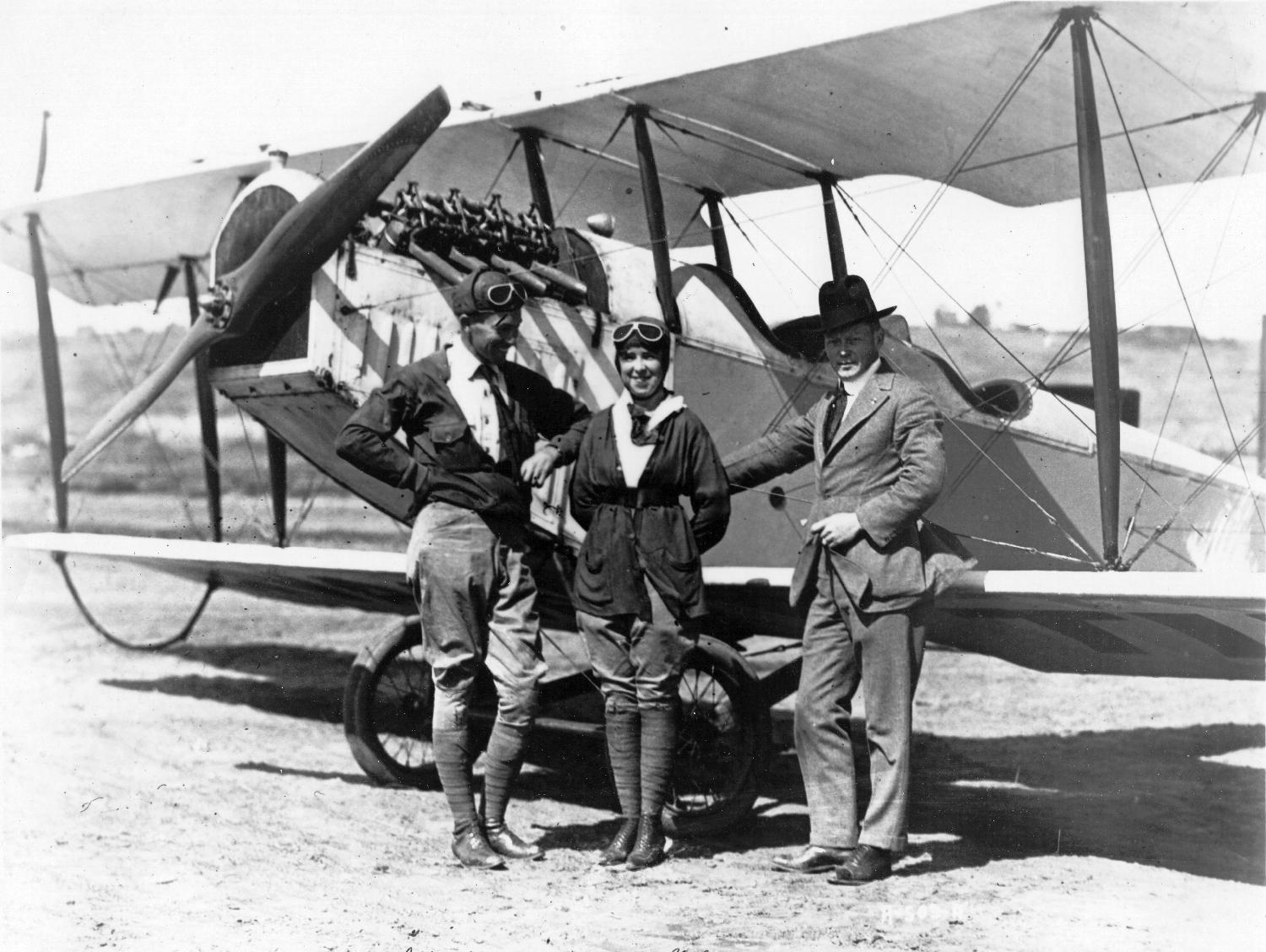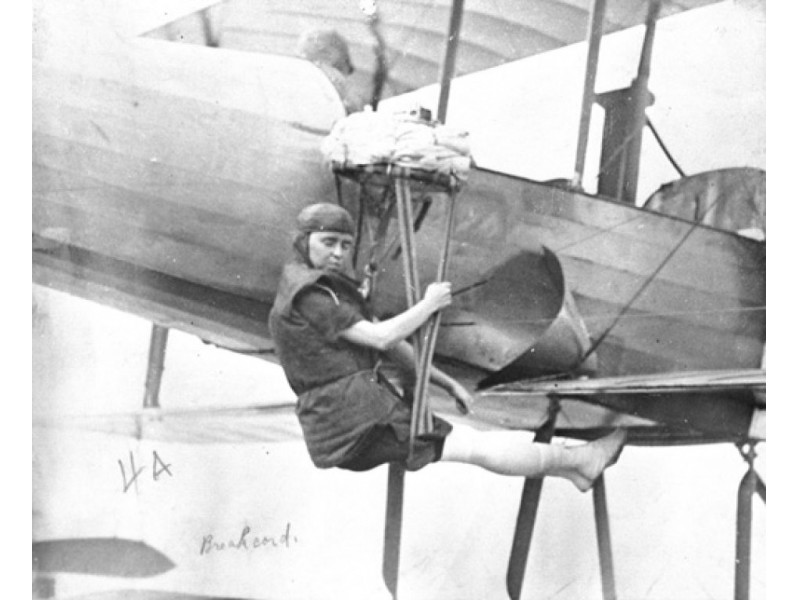In California, USA, a street named Broadwick Avenue honors Georgia Broadwick, who lived an extraordinary 85 years. Married at 12 and a mother at 13, Georgia was abandoned by her husband at the age of 15. Around that time, she witnessed parachute jumps from hot-air balloons performed by pioneering American parachutist Charles Broadwick and other world-famous parachutists. Without hesitation, she joined their ranks and, wearing a parachute designed by Charles Broadwick himself, made her first parachute jump from the skies. In 1908, at just 15 years old, she convinced a balloonist at a local fair to take her aloft in his hot-air balloon, then leapt, descending safely to the ground from 300 meters with a parachute.
Eager to join the team that performed shows at fairs, carnivals, and parks around the world, Georgia left her baby with her family and married Charles Broadwick to simplify travel arrangements. Because of her height of only 1.23 meters and weight of 39 kilograms, she was nicknamed “Tiny” and often called the “baby girl.” She traveled with the carnival and performed parachute jumps across North America. Her youth and short stature made her a favorite in aviation circles.

In 1913, she performed the jump that would make her internationally known in aviation history. At the request of Glenn Martin—who wanted her help in introducing the parachute to the U.S. Army—Georgia leapt from a moving airplane with a parachute. With this jump, Georgia Broadwick became the first woman in the world to officially parachute from an aircraft. Convinced of its usefulness, aviation units soon made parachutes mandatory for pilots. During World War I, Broadwick informally advised the U.S. Army. In San Diego, while demonstrating her parachuting skills, she became the pioneer of free-fall on her third jump. In that attempt, the static line tangled in the airplane’s tail assembly, but Georgia cut it free with a knife from her clothing and managed to open the parachute manually. Building on this experience, in her next jump, she shortened the static line and did not attach it to the airplane. Instead, she pulled it herself during free-fall to deploy her parachute, considered the first intentional free-fall parachute jump from an airplane. This innovation showed that pilots could escape aircraft safely by using what later became known as the ripcord.
Georgia continued jumping successfully and, in 1914, became the first woman to parachute into a body of water by landing in Lake Michigan. Her final recorded jump took place in 1922. Though she never held a pilot’s license, she was among the few women invited to join the “Early Birds,” an exclusive club of early pilots. During World War II, she worked for an aircraft company, maintaining her ties to aviation. While living in California, she attended aviation group gatherings and received numerous honors, including the Pioneer Aviation Award from the Adventurers’ Club of Los Angeles, the John Glenn Medal, and the Golden Wings.
Over the course of her life, Georgia “Tiny” Broadwick made around 900 jumps and performed parachuting demonstrations for the U.S. military. Before her death in 1978, she had made enormous contributions to aviation and had been one of the pioneers in the advancement of military aviation. Growing up in poverty, the “baby girl” proved that aviation was not reserved only for wealthy men—her skill and courage showed that the skies were open to all, regardless of class or background.



